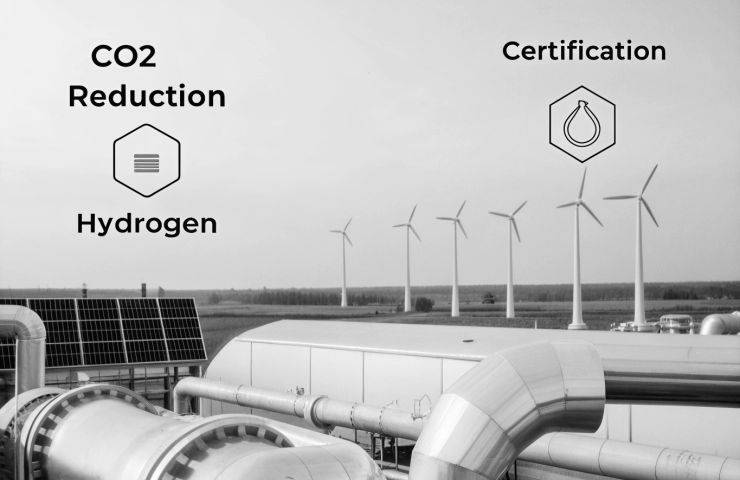
EU Finalizes Low Carbon Hydrogen Delegated Act to Guide Future of Clean Hydrogen Production
July 9, 2025The European Commission has just rolled out the long-anticipated Low Carbon Hydrogen Delegated Act, giving the green light to a new set of rules that finally define what counts as “low-carbon” when it comes to hydrogen production across the European Union. Officially published on July 7–8, 2025, this regulation is more than just some technical paperwork—it’s a major move in Europe’s climate game plan and a signal to investors that the future of low-carbon hydrogen is getting real.
So, What’s Actually in the Delegated Act?
At its core, this act lays out clear, measurable standards for how hydrogen must be produced if it’s going to be considered “low-carbon” in the eyes of EU regulators. That means no more guesswork or vague green promises. Only hydrogen that truly helps cut emissions will qualify for public support.
Here’s a snapshot of the main rules:
- Hydrogen made from non-renewable sources has to emit at least 70% less greenhouse gas than its fossil-based counterpart.
- Emissions will be calculated using updated life-cycle assessment methods outlined in the 2024 Gas Package—tweaked and tightened in this act.
- Power purchase agreements (PPAs) are off the table. Producers can’t just buy clean electricity contracts—they need to show their electrons come from the actual grid mix at the time of use.
- Biomass, biofuels, and solid carbon byproducts can be used, as long as they stay within the emissions cap—opening the door to more flexible and potentially cheaper production methods.
Why Now? The Stakes Are Big
Europe has big goals: net-zero emissions by 2050 and a 90% cut in greenhouse gases by 2040. But some sectors—heavy transport, steel, chemicals—just aren’t easy to electrify. That’s where green hydrogen and other low-carbon hydrogen options come in.
Until now, though, the industry’s been flying half-blind. There wasn’t a clear definition of what low-carbon meant, and that made it risky for both project developers and investors. This regulation gives everyone—governments, companies, and financiers—a common rulebook to work from.
Reactions from the Industry: It’s a Mixed Bag
While many welcomed the clarity, not everyone’s throwing a party. Hydrogen Europe’s CEO, Jorgo Chatzimarkakis, said the act might create extra costs and red tape that could scare off much-needed investment. “Necessary,” he admitted—but potentially burdensome too.
Others are raising eyebrows over the ban on PPAs. In regions where the grid mix hasn’t caught up with renewables, this rule might shut out projects that are otherwise clean. And the new paperwork? More reporting and monitoring could slow things down just when speed is key to industrial decarbonization.
What Happens Next?
Now that the act is out, the EU Parliament and Council have up to two months to take a closer look. They can decide to reject it, but they can’t change it. If no one raises a red flag, the rules will officially kick in before August 5, 2025.
Looking a bit further ahead, there’s more to come. In 2026 and again in 2028, the Commission plans to review and possibly expand the scope to include things like nuclear-based hydrogen and project-by-project carbon accounting, which could open the door to even more innovative technologies.
Why This Matters for the Market
This isn’t just about being green for the sake of it. The EU is pouring public money and attracting private capital into hydrogen, and they want to make sure it’s backing the right kind of projects. No greenwashing allowed. This rulebook puts an enforceable carbon filter in place.
By standardizing how emissions are counted, it helps developers and investors make smarter decisions—and puts all technologies on a level playing field. Whether it’s renewable-powered electrolyzers or methane reformers with CCS, everyone will be judged by the same yardstick.
Wrapping It Up
This is a pivotal moment for Europe’s hydrogen future. With the Delegated Act now in play, the message is loud and clear: if a technology can’t prove a real reduction in emissions, it won’t get backed by public funds.
For developers and investors, the road ahead is clearer than ever. The rules are out. The question now? Who’s ready—and fast enough—to build within them.



 With over 15 years of reporting hydrogen news, we are your premier source for the latest updates and insights in hydrogen and renewable energy.
With over 15 years of reporting hydrogen news, we are your premier source for the latest updates and insights in hydrogen and renewable energy.
Thank you for this very useful article.
1) Can you provide an Internet link to the specific Delegated Act you are reporting on?
2) Also, within the Act, can you provide the section number dealing with PPAs which caused you to write, “Others are raising eyebrows over the ban on PPAs. In regions where the grid mix hasn’t caught up with renewables, this rule might shut out projects that are otherwise clean”?
Thank you.